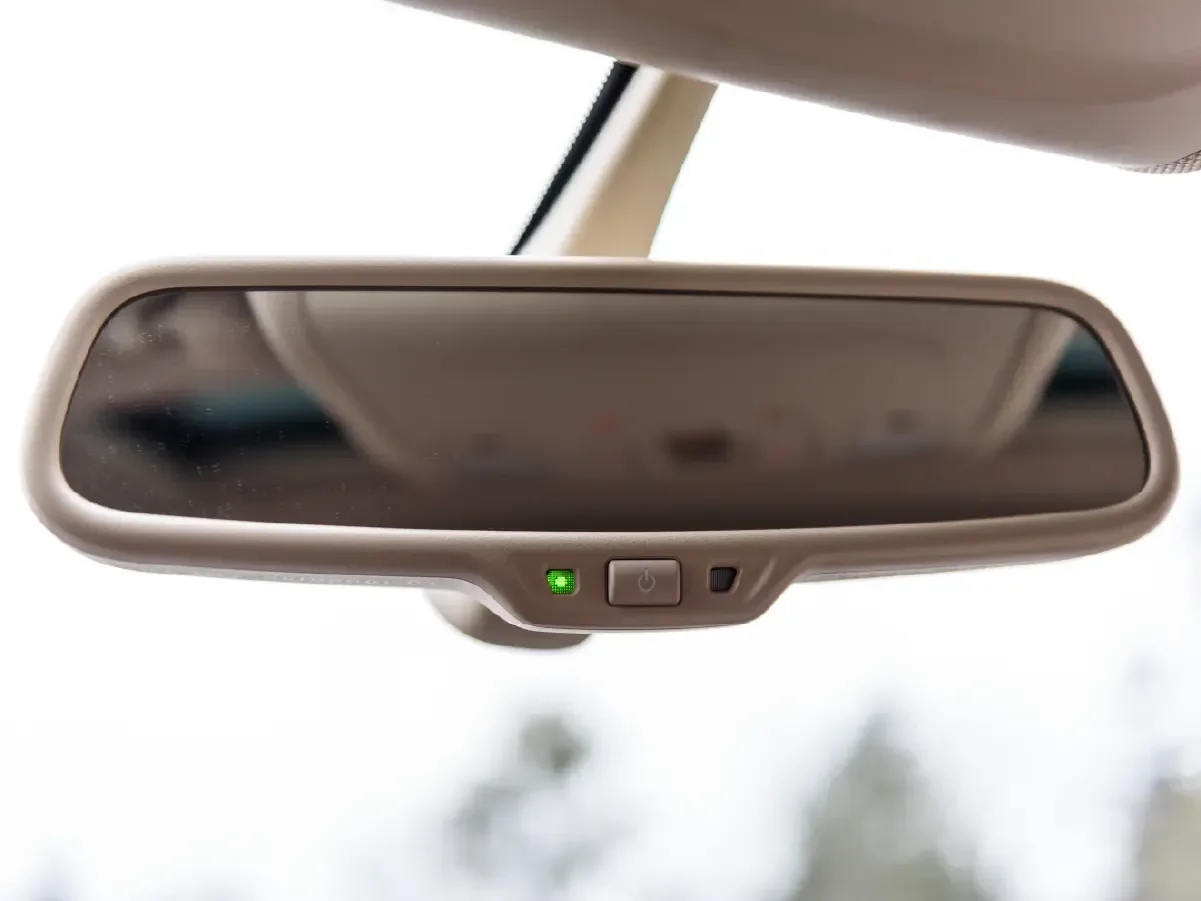

Types of Rear View Mirrors: Which One is Best for Your Car?
- 1Day/night mirrors can offer manual/automatic glare reduction
- 2Add-on convex mirrors are helpful in reducing blind spots
- 3Smart mirrors provide camera feeds adding to convenience but cost more
- What Makes a Good Rear View Mirror?
- Types of Rear View Mirrors
- The Basic: Standard Rear View Mirrors
- Glare reduction: Day/Night Rear View Mirrors
- Seeing More: Convex Rear View Mirrors
- Obstruction-proof: Smart Rear View Mirrors
- Complementary Mirrors: Outer Rear View Mirrors
- Choosing the Right Rear View Mirror for Your Car
- Conclusion
Never underestimate the importance of your car’s rear view mirrors. After all, it’s what keeps you aware of what’s happening behind your vehicle while you’re driving. This information helps you be a safer driver and a responsible road user.
Mirrors are often thought of as basic equipment that comes as standard with your car, whether it’s a new purchase or a used car. However, there are different types of rear view mirrors available, some of which can enhance your driving safety. Here’s how to pick the right rear view mirror to suit your car and your needs.
What Makes a Good Rear View Mirror?

Before we discuss the types of interior rear view mirrors (IRVMs), it helps to understand what makes one effective. The primary function is to provide a clear and unobstructed view of the areas behind your vehicle. They aren’t only useful while reversing, either; the view of the road and road users behind you as you drive along is important too. With a view of other cars, buses, trucks, and even two-wheelers behind you, you can safely plan your driving so as to not be in an accident, or worse, cause an accident.
Consider how many times you’ve had a vehicle behind you in your blind spot, seemingly pop up out of nowhere, and how easily it can cause a scary moment, or a reactionary move that’s unsafe. A good quality rear view mirror should offer:
- Excellent visibility with clear, unobstructed views
- Minimal distortion for accurate distance perception
- Durability to withstand daily use
- Proper sizing and positioning for optimal coverage
Minimal blind spots for maximum safety
Types of Rear View Mirrors
From simple mirrors to auto-dimming mirrors and even systems with integrated camera feeds, the rear view mirror has come a long way towards safer driving in any condition. Some of the commonly available types of mirrors, either stock or aftermarket, include:
- Standard IRVMs
- Day/night rear view mirrors
- Wide-angle/convex mirrors
Smart rear view mirrors
The Basic: Standard Rear View Mirrors

The standard IRVM is the most common type found in most vehicles. These mirrors are usually flat and offer a true representation of objects behind you. They're well suited to cars where the rear window provides adequate visibility.
Advantages
- Cost effective and cheap to replace
- Require virtually no maintenance
Provide true representation of distance and size
Limitations
- Effectiveness is limited by rear window size
- Easily obstructed by passenger headrests or cargo
- Fixed field of view
Can cause glare at night
Glare reduction: Day/Night Rear View Mirrors
Day/night rear view mirrors are thankfully replacing the standard IRVM in most new cars, irrespective of the segment of car or ex-showroom price. Day/night mirrors can significantly improve night driving comfort and safety by eliminating blinding glare that can impair your vision. They're particularly valuable for drivers who frequently drive at night or in areas with heavy traffic. These mirrors, also called anti-glare mirrors, can be manually adjustable or auto-dimming.
Manual day/night IRVMs can be adjusted via a tab on the IRVM. It works by changing the angle of reflection of the rear view mirror’s front glass and silvered back. During the day, the silvered back reflects the scene behind you. By flipping the tab, following headlights bounce off the silvered back and away from your eyes, while the front glass of the mirror reflects the scene behind you at reduced intensity.
Auto-dimming IRVMs work through electrochromic materials that can darken when an electrical current is applied to it. A sensor detects bright light from behind which triggers the dimming feature to reduce the intensity of the light. Auto-dimming IRVMs return to normal when the light source is removed. This type is usually available on top-end variants of mass market cars.
Seeing More: Convex Rear View Mirrors
Convex mirrors, also known as wide-angle or panoramic view mirrors, offer a broader field of view compared to flat mirrors. These types of mirrors are fit for larger vehicles like SUVs or large MPVs where blind spots are more prominent. These types of mirrors are also available with clip-on fitment to be added to existing mirror systems, both inner and outer.
Advantages
- Broader view shows you more of what's happening behind and to the sides of your vehicle
- Useful for detecting vehicles or objects in your blind spots
Enhances peripheral vision
Disadvantages
- Distortion makes objects appear smaller and farther away than they actually are
Quality of some aftermarket solutions may be less than desirable
Obstruction-proof: Smart Rear View Mirrors
Image: https://media.production.jlrms.com/2022-05-09/image/d813d85c-b6c3-4e92-be15-0f1e111e9d47/RRS_23MY_18_Interior_116_GLHD_100422.jpg?VersionId=ylu4jW1I03kBrOqKdQFfJr_K1Xn6H0f.
Smart view mirrors or digital display mirrors can show a live feed from a rear-facing camera. These can usually be switched between a traditional mirror mode and camera feed, including dash cam functionality. They’re usually available on luxury cars but should be increasingly available on mass market models as the technology trickles down with time.
Advantages
- Unobstructed view, regardless of passengers or cargo
- Enhanced visibility in low-light conditions
Dash cam capability for security
Disadvantages
- Electronic components can fail
- Takes time to get used to
- Significantly higher cost
Lacks the natural depth perception of traditional mirrors
Complementary Mirrors: Outer Rear View Mirrors
Outer rear view mirrors are also an integral part of your rear visibility tools. These mirrors are to be used along with your IRVM to provide a complete rearward view. From old-school convex clip-ons to modern technology such as blind spot warning and even camera feeds to monitor your blind spot, ORVMs can help provide comprehensive rear visibility.
Like with IRVMs, the key is to check your mirrors often while driving to stay aware of your surroundings and not just the view through your windshield. A tip to remember is to check your mirrors sequentially while driving, continuously scanning traffic behind so as to stay alert and safe.
Choosing the Right Rear View Mirror for Your Car
For most people, a good quality day/night IRVM will be the best solution to balance functionality and cost. A nice feature to have, especially for newer drivers, is the automatic dimming day/night mirror as it takes the guesswork out of night driving. Similarly, outer rear view mirrors with accessory clip-on convex mirrors can be helpful for navigating crowded city streets. When selecting the best rear view mirror for your car, consider these factors:
Driving Conditions:
- Frequent nighttime driving - day/night mirrors
- Heavy traffic areas - convex mirrors
- Highway driving - convex mirrors
Vehicle Type:
- Standard passenger cars - traditional or day/night mirrors
Large SUVs - wide-angle mirrors
Conclusion
While it often gets overlooked by experienced drivers and first-time car owners alike, your rear view mirror is a critical safety component. Whether you choose a traditional mirror, upgrade to a day/night or auto-dimming IRVM, or even invest in convex mirrors, the key is picking one that offers enough adjustability to suit your driving position. The whole point is to enhance your visibility and confidence when driving. Remember, the best rear view mirror is one that you'll actually use effectively and that suits your specific driving needs.
Frequently Asked Questions
Expand all



























